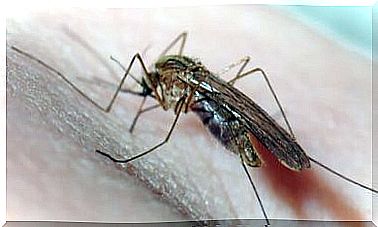Symptoms Of Heart Disease In Dogs

Taking care of your pet’s health is essential in order to guarantee him an appropriate quality of life, and learning to identify the presence of various pathologies from home will be very important.
Today we are going to teach you some signs related to heart disease in dogs, so that you learn what symptoms you need to look out for.
Heart problems are a leading cause of death in pets, and the reason these types of problems are so fatal is that they are generally not detected in time. Often when obvious signs of the disease appear, it is already in an advanced state.
What makes them difficult to identify is that the initial symptoms do not present themselves as alarm symptoms, so it is difficult to distinguish them from other types of pathologies.
However, there are some aspects that you can take into consideration:
Differences between large and small breed dogs
One aspect that many pet owners ignore is that the size of the dog has a big impact on the eventual appearance of heart disease.
Small dogs, for example, tend to develop disturbances or deformations in the valves of the heart, while larger dogs have problems pumping enough blood throughout the body.
In the case of small dogs, the bacteria in their mouths end up damaging the heart valves, which are responsible for controlling the entry and exit of blood during the heart cycle.
This disease is called valvular insufficiency, and if left untreated it can be fatal, so pay close attention to infections in your dog’s mouth, where the disease usually originates.
As for large dogs, due to organ weakening due to aging, the process of pumping blood throughout the body becomes more and more difficult, which hinders the proper functioning of organs, muscles and other tissues.
Likewise, giant breed dogs have such large hearts that the valves do not touch, which is why a condition called dilated cardiomyopathy develops.
Signs to watch out for

Heart failure causes deficiencies in the transport of oxygen and nutrients necessary for the dog’s body to function properly. Pay attention to the following symptoms:
Fatigue
A dog that appears excessively fatigued after physical activity, for example after running, playing or taking a walk without making great efforts, is a sign of risk, as it can mean that the dog’s body is not adequately oxygenated.
Constant cough
Due to the effort of the heart to pump the right amount of blood to maintain a normal blood supply, respiratory problems may occur which will initially show themselves through a dry and constant cough.
Wheezing
Considering the above, respiratory problems will cause irregular inhalations, which will increase in pace as the insufficiency becomes more severe. In severe cases, fainting may occur.
Take your dog’s pulse indoors

If the dog’s heart is working poorly, its pulse will increase to compensate for the presence of less oxygen in the body. A good way to detect heart disease early is to check your dog’s pulse.
Normally, a small or mini dog (less than 13 kilos) should have between 100 and 160 beats per minute.
For animals of medium or large size, the pulsations will decrease from 60 to 100 per minute.
With this in mind, have your dog lie on his side and let him be relaxed. Place your fingers (except thumb) on the inner side of the thigh approximately at groin level, and slide your fingers until you feel the artery. Count the beats for 15 seconds, then multiply the number by 4 and you will get the amount of beats per minute.
Be sure to repeat this several days in a row to make sure the count is correct. If you find measurements below or above those indicated based on your pet’s weight, the best thing to do is take him to the vet immediately.
Remember not to give your dog any medicine for humans, as this could cause further problems and lead to an adverse reaction. Before providing any type of treatment it is best that you consult with your veterinarian.








